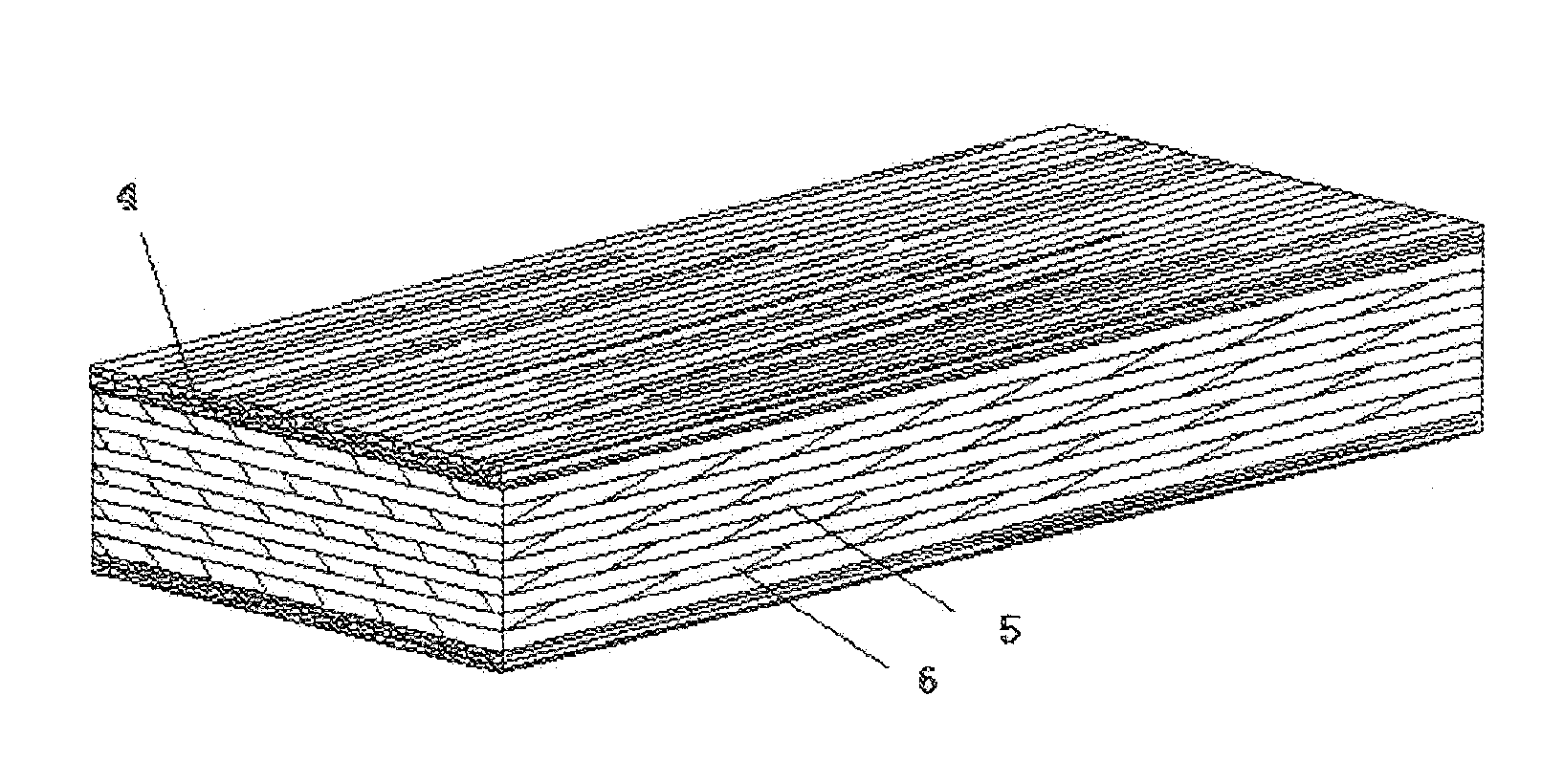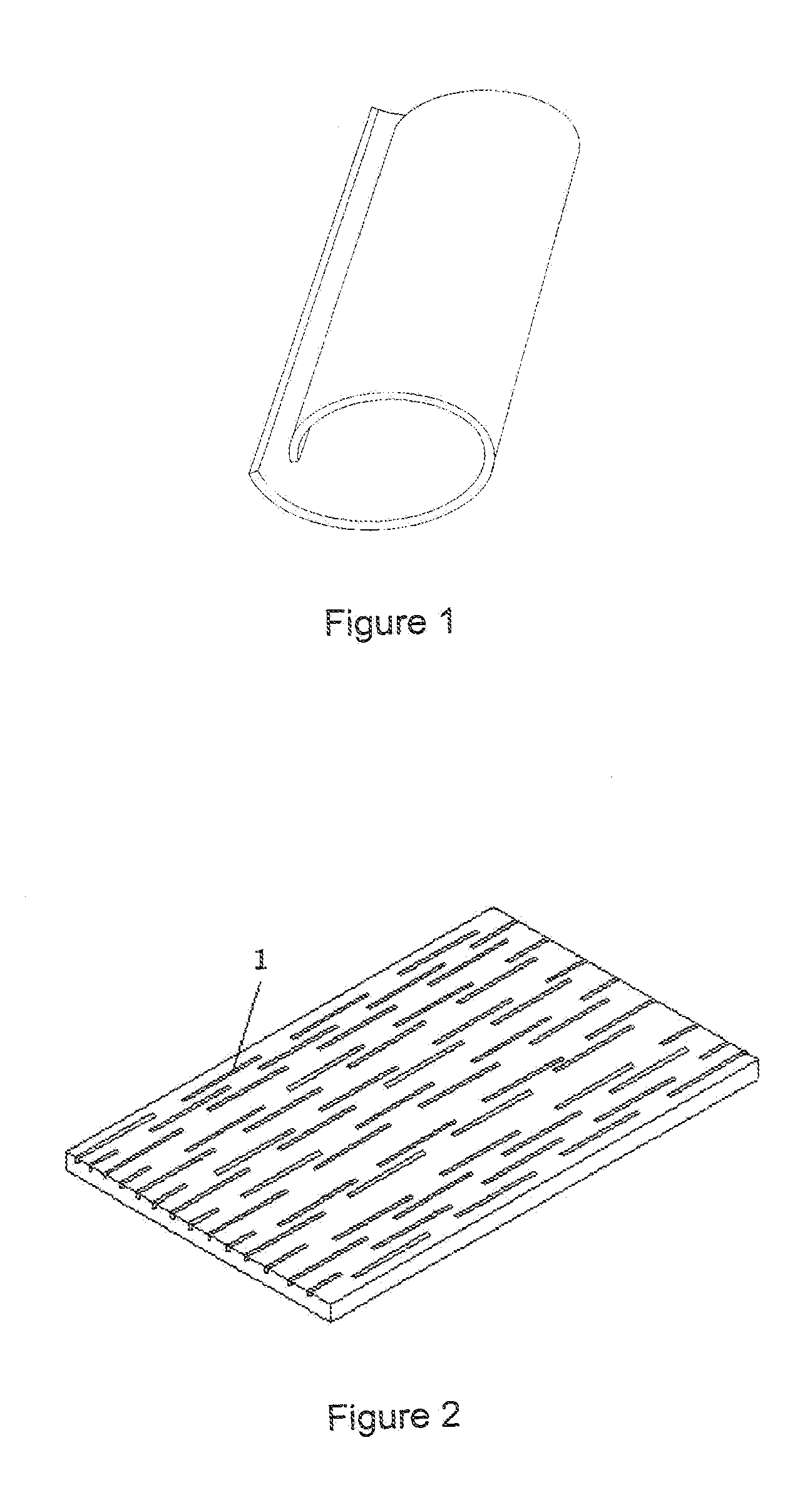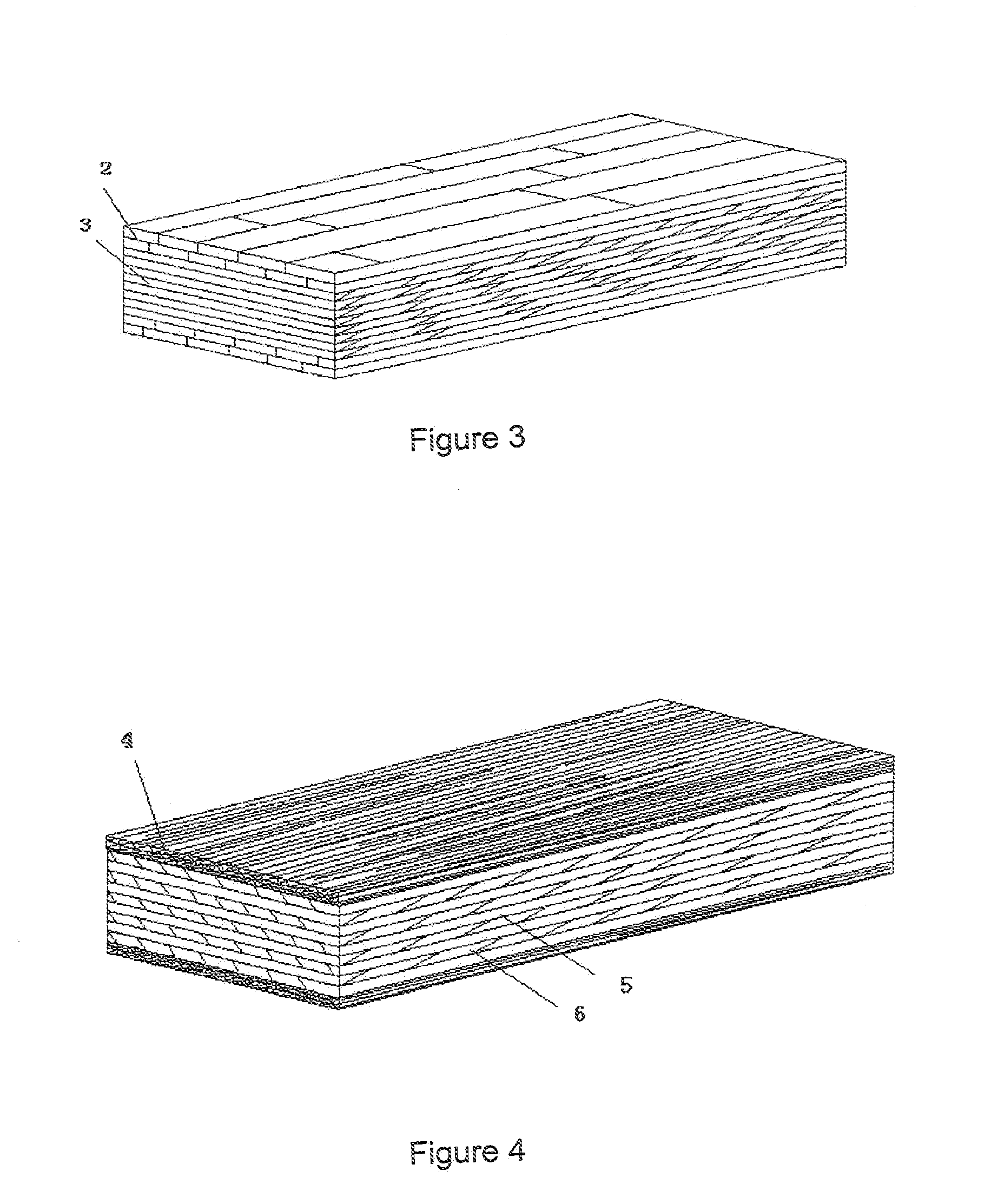Ultra thick bamboo-wood composite panel, ultra thick solid wood composite panel and manufacturing methods thereof
- Summary
- Abstract
- Description
- Claims
- Application Information
AI Technical Summary
Benefits of technology
Problems solved by technology
Method used
Image
Examples
example 2
[0134]Manufacture technology of bamboo scrimber is a known technology, (Zhao Ren-jie, Liu Yun-shui, bamboo-based Panel Technology, China Forestry Publishing House, 2002). It is divided into cold-pressing and oven-drying method and hot pressing method, wherein in the cold-pressing and oven-drying method, the bamboo is manufactured to bamboo filaments or bundles, by dipping glue, drying, moulding, cold pressing and oven-drying, then bamboo scrimber is made; in the hot pressing method, the bamboo is manufactured to bamboo filaments or bundles, by dipping glue, drying, pavement, hot pressing, then bamboo scrimber is formed; the above bamboo scrimber is processed into bamboo scrimber veneers with the thickness of 5 mm, 6 mm, 7.5 mm, 10 mm, or 15 mm, the width of 50 mm and the length of 4000 mm by sawing, splicing and finger jointing. The peeling, degradation and glue spreading procedure of Chinese fir are the same as in Example 1.
[0135]The above sizing bamboo scrimber veneers and ultra-t...
example 3
[0138]The manufacture process of glued laminated bamboo and bamboo scrimber are as described in Example 1 and Example 2, and the bamboo is sawed into veneers with the thickness of 8 mm.
[0139]The peeling and stress degradation of eucalyptus veneer are the same as in Example 1. The thickness of veneer is 8 mm.
[0140]The resorcinol adhesive is composed of main agent and curing agent, wherein, the amount of said polyformaldehyde is 8 to 15% of that of main agent, after stirring uniformly, resorcinol adhesive is formed.
[0141]Said main agent is linear resorcinol resin liquid containing alcohol, said curing agent is polyformaldehyde, the amount of said polyformaldehyde is 8 to 15% of that of main agent, after stirring uniformly, resorcinol adhesive is formed.
[0142]The resorcinol adhesive is spread uniformly on the surface of stress degraded wood veneers and on the surface of bamboo scrimber or glued laminated bamboo; the glue spread amount in each glue layer is in a range of 150 to 300 g / m2...
PUM
| Property | Measurement | Unit |
|---|---|---|
| Temperature | aaaaa | aaaaa |
| Temperature | aaaaa | aaaaa |
| Temperature | aaaaa | aaaaa |
Abstract
Description
Claims
Application Information
 Login to View More
Login to View More - R&D
- Intellectual Property
- Life Sciences
- Materials
- Tech Scout
- Unparalleled Data Quality
- Higher Quality Content
- 60% Fewer Hallucinations
Browse by: Latest US Patents, China's latest patents, Technical Efficacy Thesaurus, Application Domain, Technology Topic, Popular Technical Reports.
© 2025 PatSnap. All rights reserved.Legal|Privacy policy|Modern Slavery Act Transparency Statement|Sitemap|About US| Contact US: help@patsnap.com



